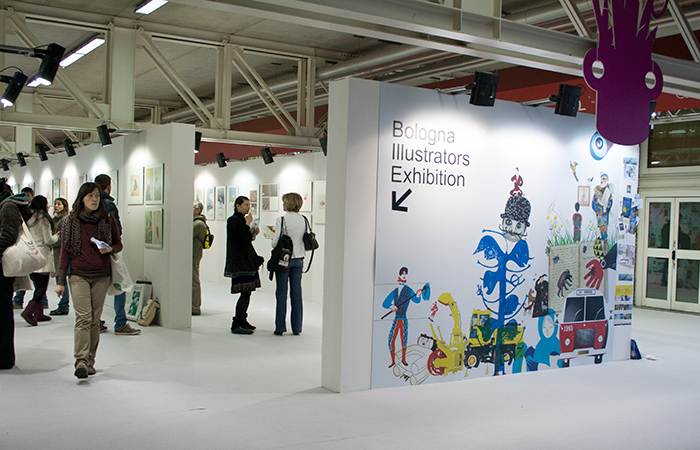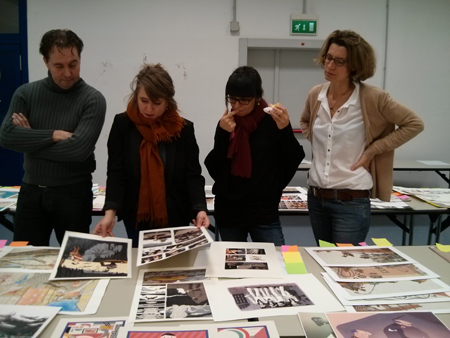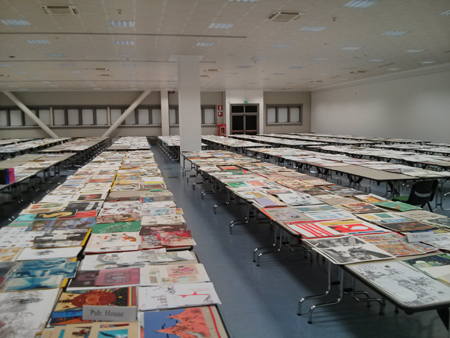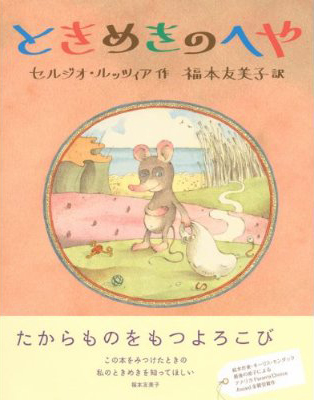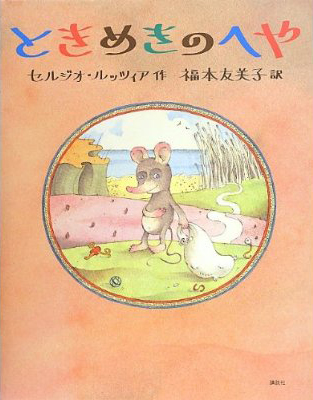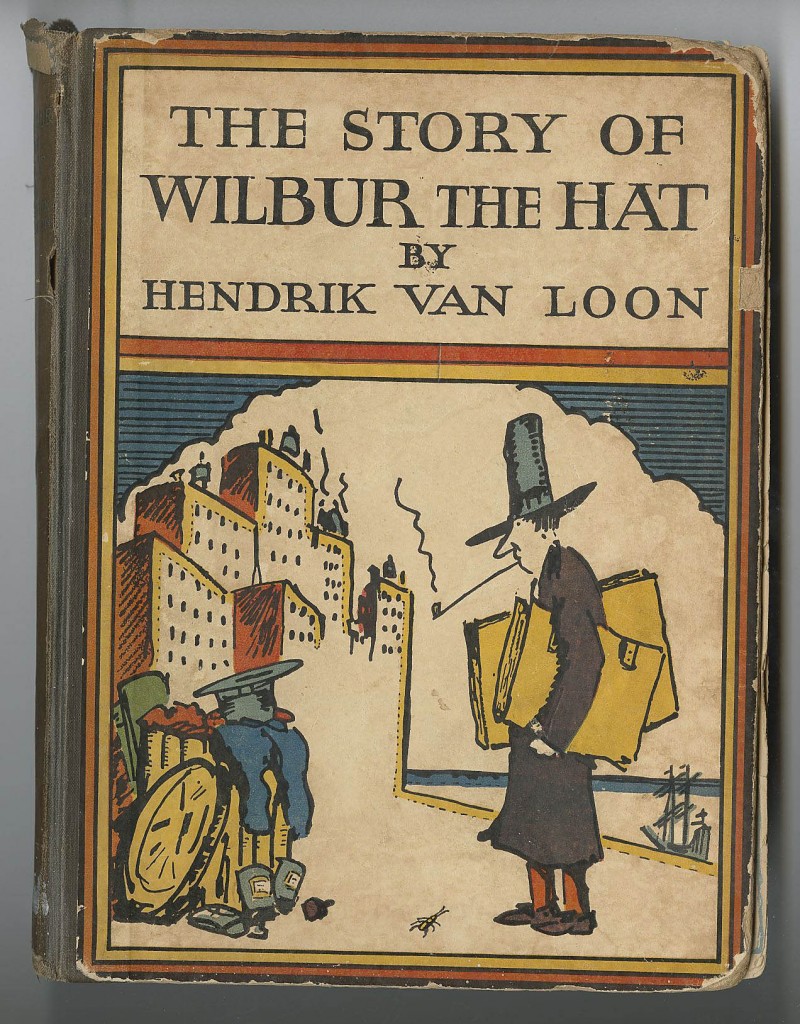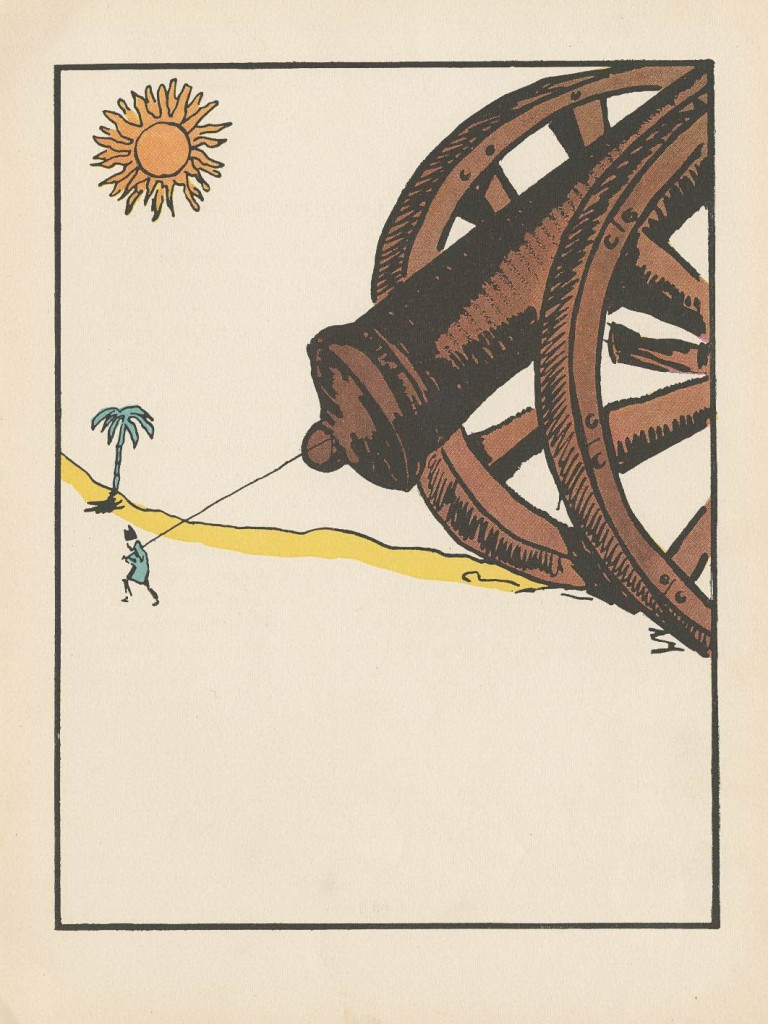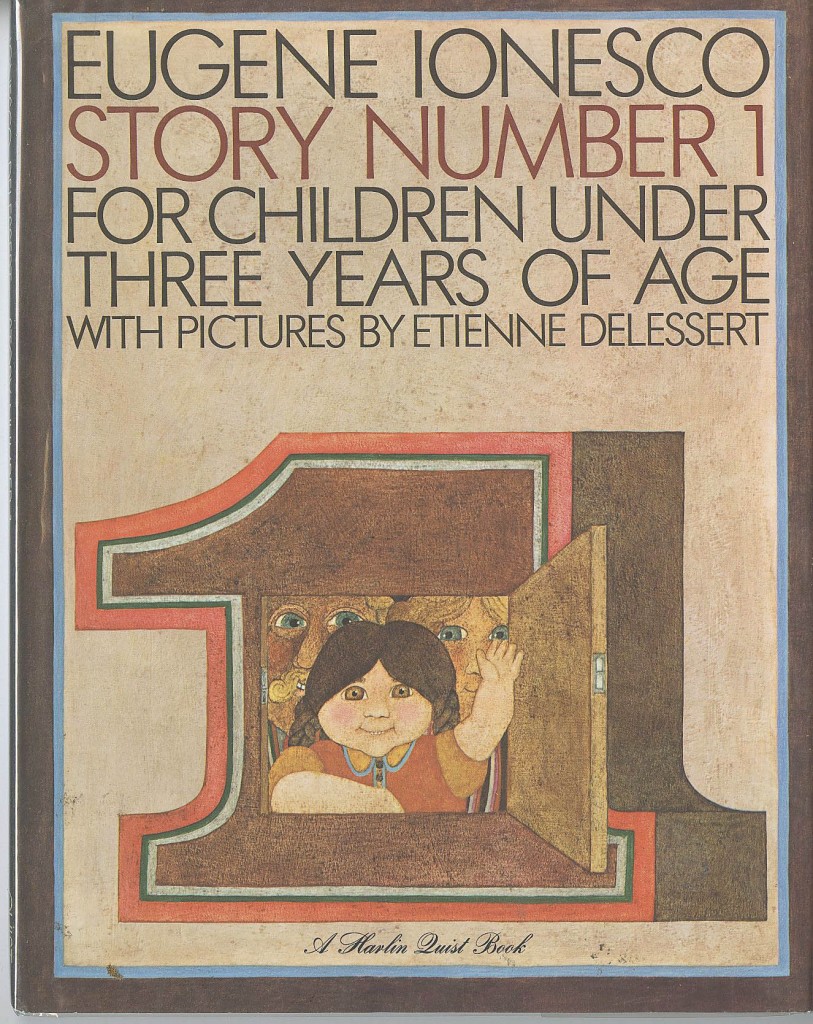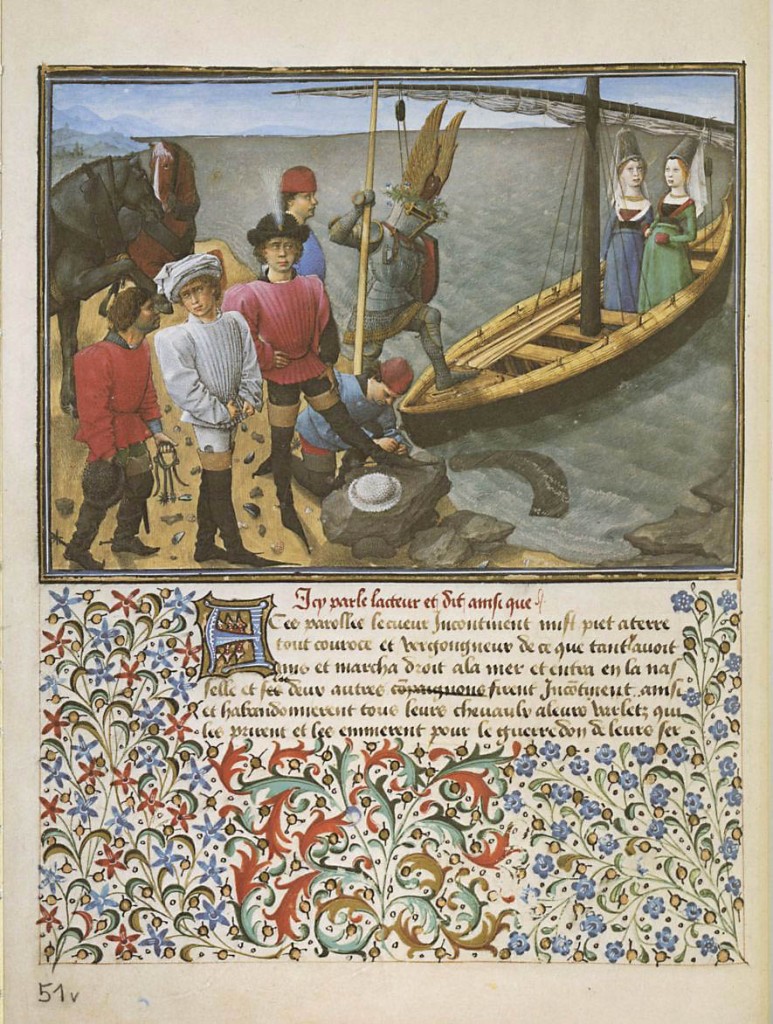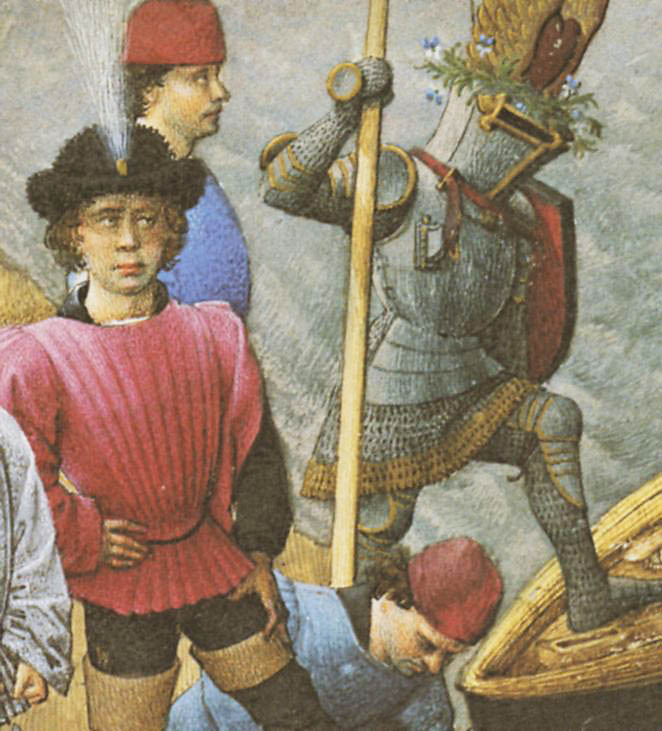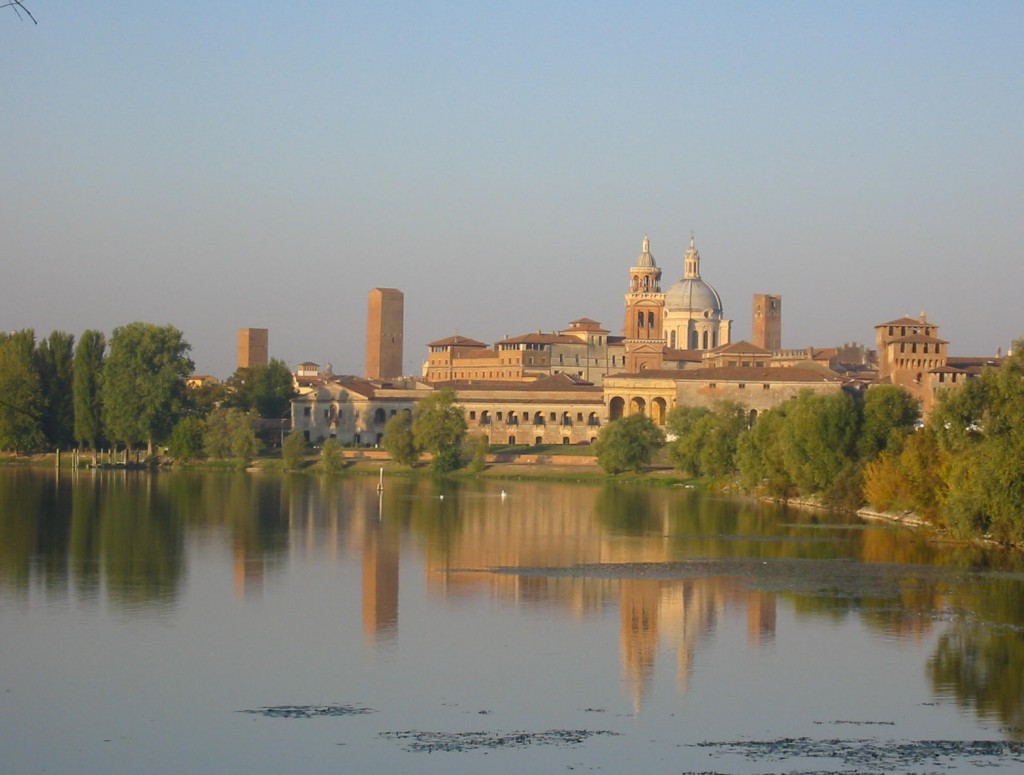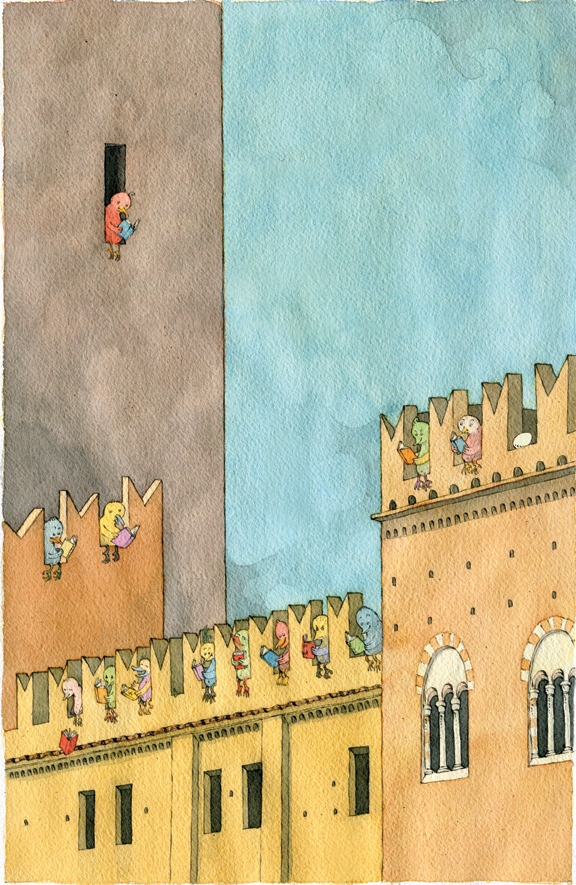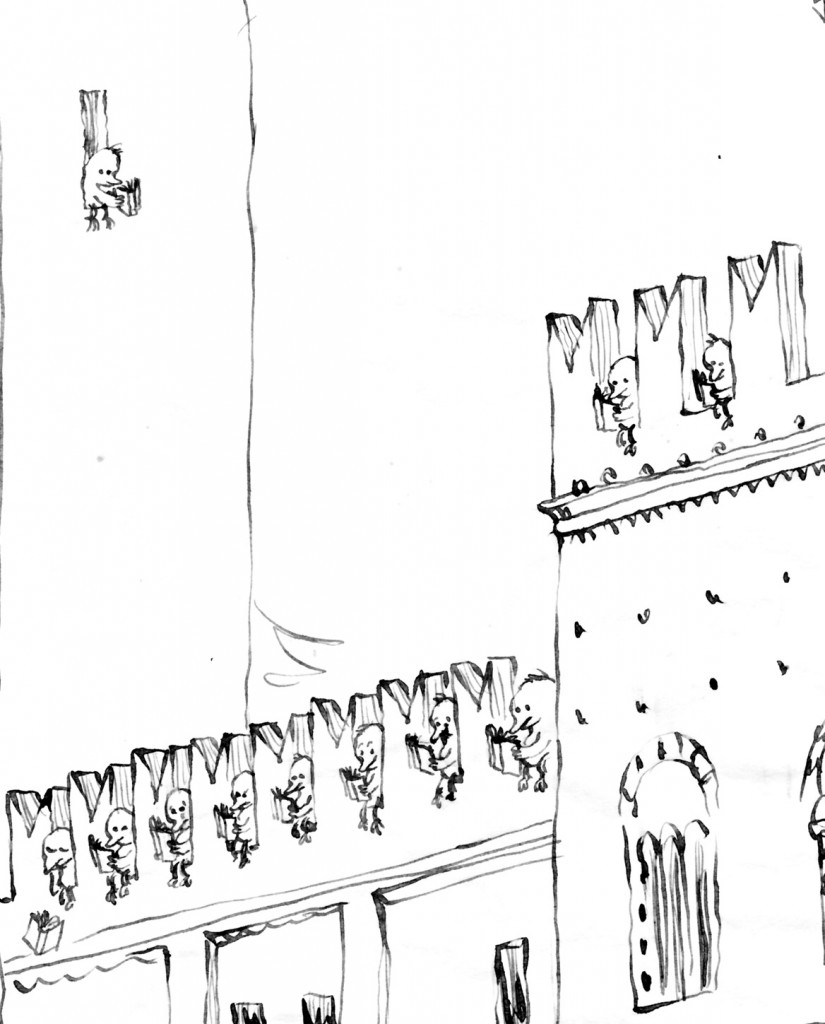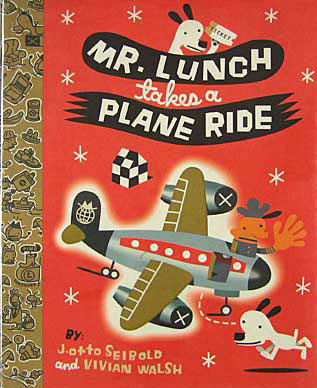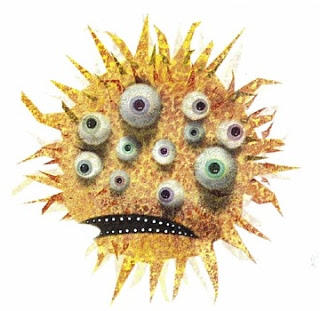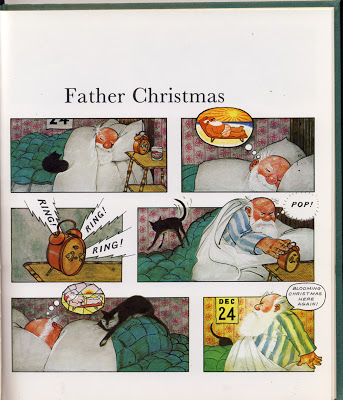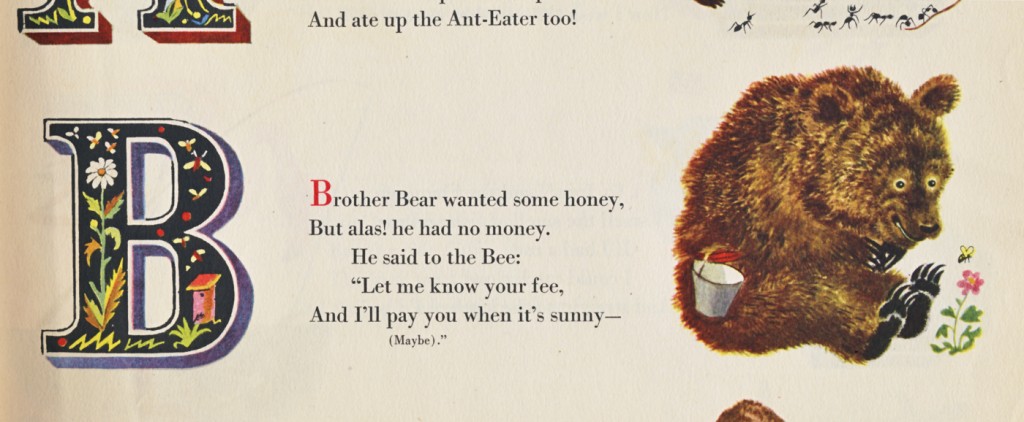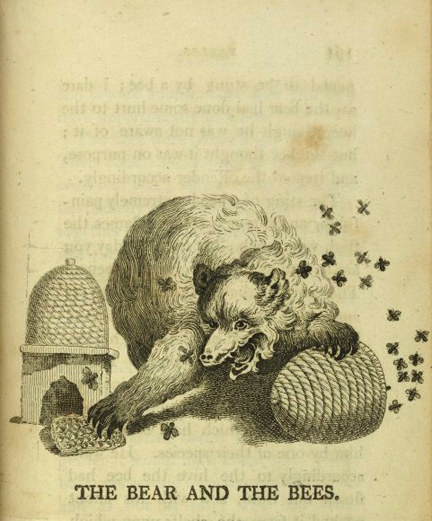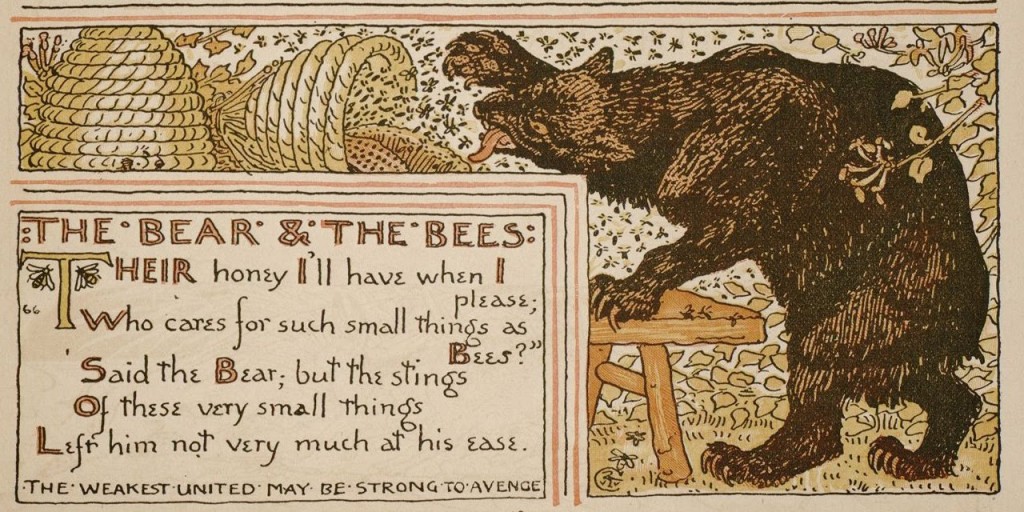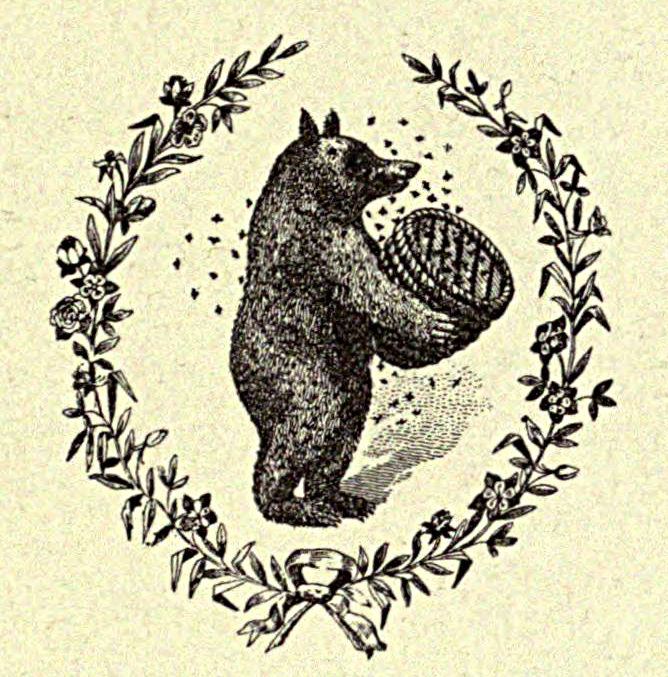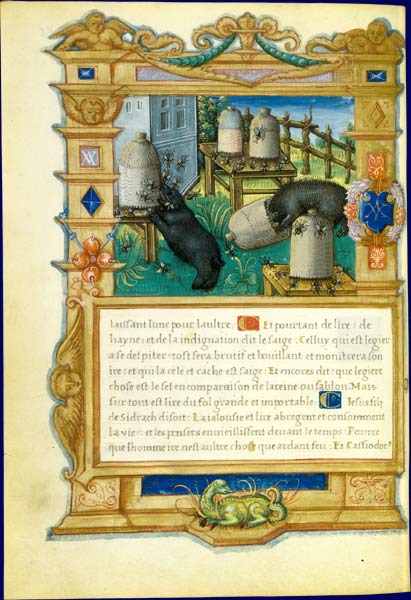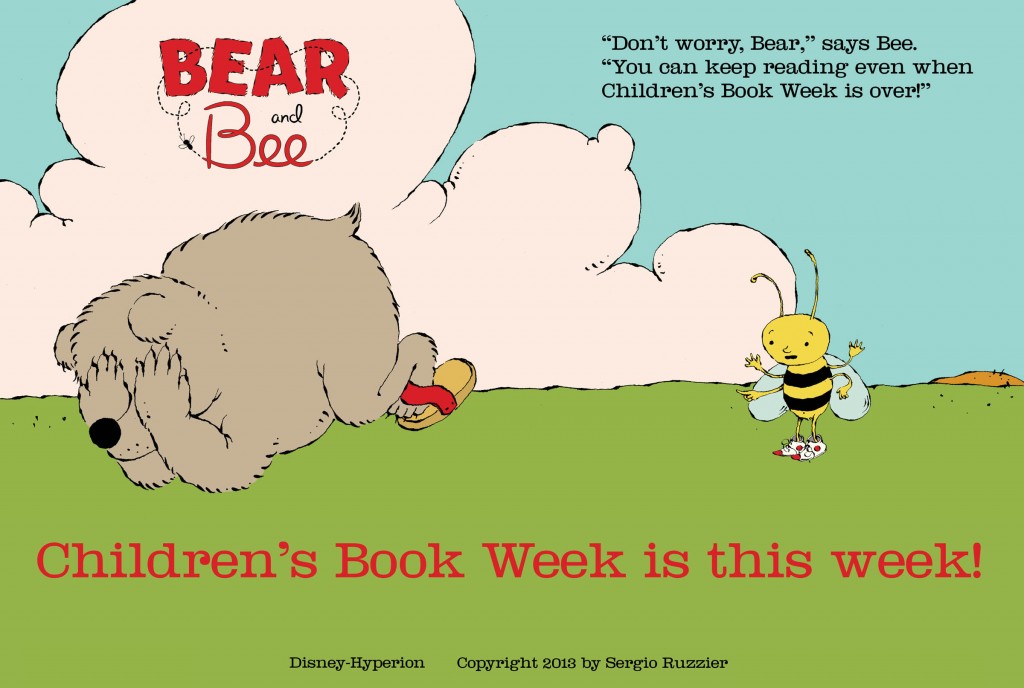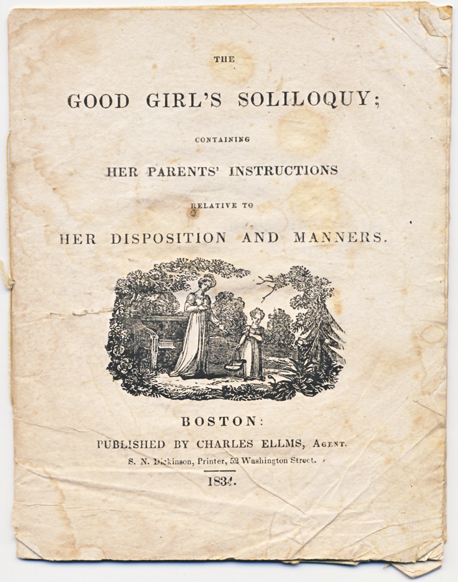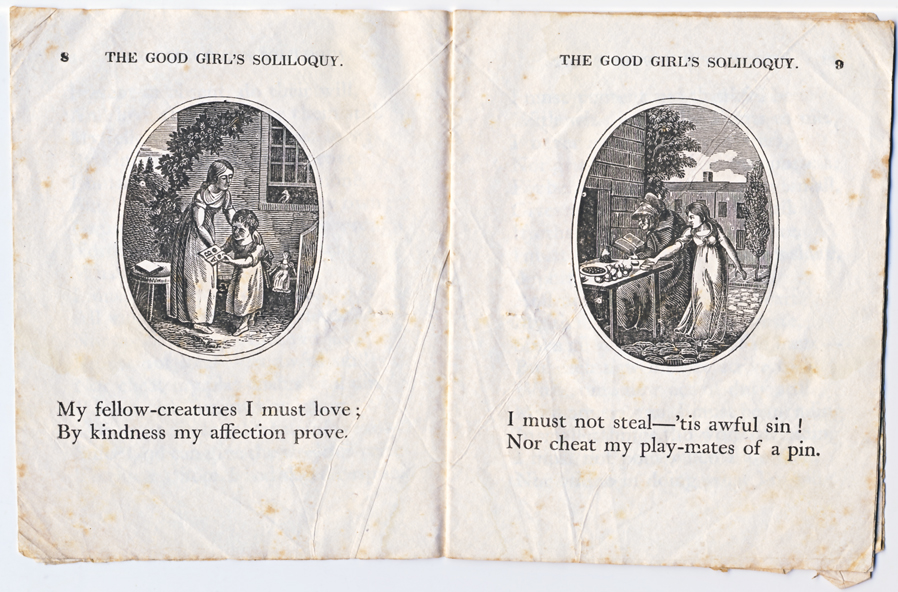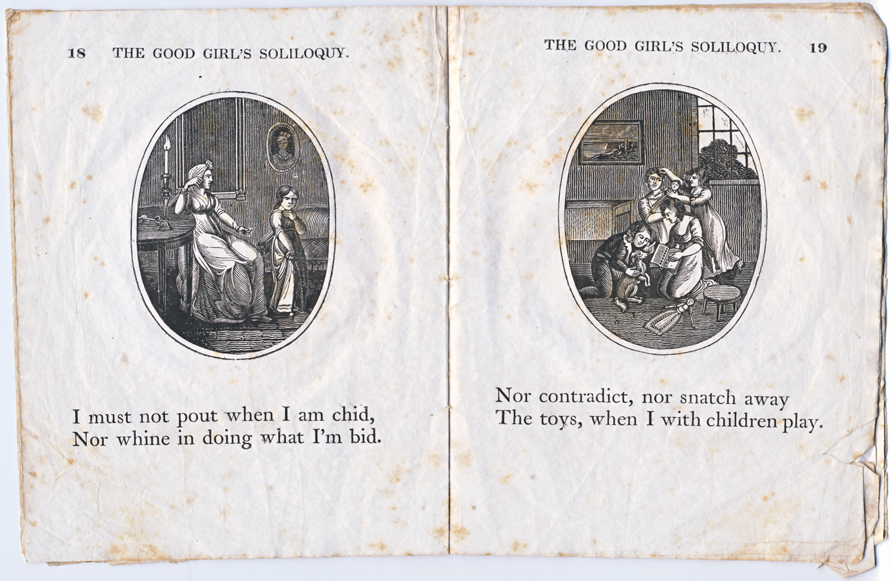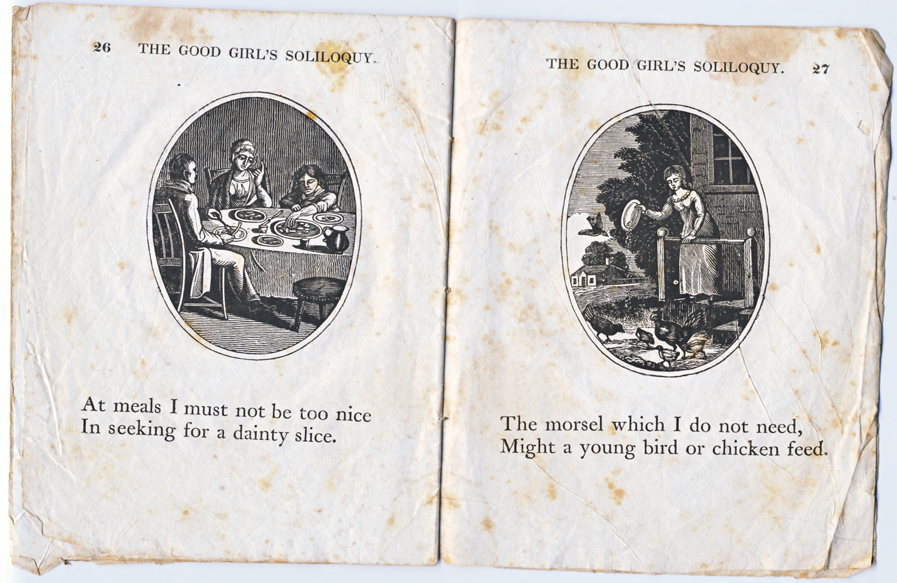Everybody in the world of children’s books knows what the Bologna Children’s Book Fair is, and how important it is in the publishing business. Every year, in the spring, publishers and agents come from all over the world to meet, talk, and buy and sell book rights.
But during the four days of activities, there are so many other interesting things going on on the fair’s ground and in the city: debates, presentations, exhibitions, award ceremonies… One can just take a brief look at last year’s program to get an idea. What I like the most when I manage to be there, is just walking around the booths and browse the thousands of new books on display. It’s an exhilarating, if intoxicating, experience.
One event that is of particularly great interest for all children’s book artists, is the Illustrators Exhibition. I know that most U.S. illustrators have no idea of what I’m talking about, which is unfortunate. Every year, thousands of illustrators from all continents send their work hoping to be selected for the show. Only seventy or eighty artists get to be chosen each edition, and their works are hung in a gallery at the fair, and featured in a nicely produced catalogue. The show, once the fair is over, travels to other countries during the following months. As an aspiring illustrators, in my late teens, I used to send my submissions every year, until, too much hurt in my self-esteem by the continuous rejections, I ended that masochistic game. For some reason I am not aware of, this year I decided to try again, more than twenty five years after my last attempt. I got in. I am obviously very happy about it, but I can’t help wishing that my 19-year-old self could be with me now to celebrate.
Anyway, one of this year’s jurors, Anna Castagnoli (an excellent blogger and artist), has written an insightful diary of her experience judging the show. With her permission, I am translating her four posts and will publish them here, beginning just below. The pictures are also taken from her blog.
Just one more note for who’s planning to go to the Fair: in Bologna, I have experienced some of the most delicious food and friendliest hospitality of my life. It’s difficult to find a restaurant that will disappoint you, with the exception, in my experience, of the Drogheria della Rosa: I would suggest to avoid it.
Judging the 2014 Bologna Children’s Book Fair’s Illustrators Exhibition.
By Anna Castagnoli
(A preamble for all the illustrators who were not selected. A jury expresses a verdict that is only its own: it’s not an absolute judgement. A different jury might have made different choices. What follows is an account of our decisions: I share it because I find it to contain useful thoughts on illustration and its language.)
One juror’s diary
Day 1: the jurors get to know each other
January 21, 2014
We should have been five, as it’s usually the case at the Book Fair, but unfortunately Nadine Touma, from Libano, was denied the visa. In the evening of our first meeting, on the 12th of January, we had dinner with the Book Fair directors. The selection was to begin the day after, to last three long days.
The judges were:
Kitty Crowther, who in 2010 won the Astrid Lindgren Memorial Award, the “World’s Largest Children’s Literature Award.” She was still excited as she told us about the day she received the 500,000 Euros prize.
Isabel Minhos, publisher of Planeta Tangerina, the Portuguese house that last year won the Fair’s award as the best European publisher: quiet, with piercing eyes hidden behind dark-framed glasses.
Errol van der Werdt, director of the Dutch museum TextielMuseum, where art and technical research in the textile field are combined in order to create original designs of various nature. He is a man with a humanistic and artistic culture of immense refinement who was approaching the illustration world for the first time.
And myself, Anna Castagnoli: I suppose I was chosen for this prestigious invitation thanks to my work through all these years on the illustration blog Le Figure dei Libri (“the pictures in the books”).
It was an explosive combination, in a good way, but it became clear to us how thin the border between tension and constructive collaboration can be. Luckily, we were all in agreement on what the real values were; so flaws, personalities, and individual strains were left behind.
But let’s start from the beginning. The morning of the 13th of January, the doors of one of the Bologna Fair’s pavilions opened to offer us a breathtaking view: an enormous hangar full of endless tables buried by illustrations. To be precise: 15,940 original illustrations, for a total of 3188 illustrators from 191 countries. We were astounded: how could we judge all that in merely three days?
Fortunately, the Book Fair organizers’ experience, embodied by Deanna Belluti, assisted us. She is an elegant, kind, resolute French-Italian lady: without her firm and knowing hand we would never had made it.
9 A.M.: observing in solitude
The first piece of advice was for each of us to take some solitary time – one and a half hour – to walk around the tables and get a personal idea of the works submitted. I started immediately for my adventure. The tables were divided by country, by school, and by the works being published or unpublished. I thought that the general level of the works was high and full of surprises. I felt the same feeling one experiences when one is in love: an absolute happiness to be in that ocean of images. It was as if I were swimming among fragments of light and color. I know very well how an illustration, for the artist who created it, is a fragment of herself. How many emotions were rising from those tables!
There were four long tables where drawings deemed not worthy had been grouped: a pre-selection done by the Book Fair’s graphic designers in order to help us with the screening. You shouldn’t think that those works were dismissed: they were in good display like the others, and we were invited to carefully examine them as well, to make sure no good work ended up there by mistake.
The pre-selection had been done with great care. Many images were not even illustrations: a number of tattoos, daubs, amateurish portraits. Right away, Kitty, Isabel, and I felt the eagerness to “save” the illustrators who ended up in that group. We found about ten, but it was more the enthusiasm of the rescue more than a good eye, as, if I remember correctly, none of those pieces made it to the final selection. The solitary journey lasted almost two hours. We then took a coffee break and they told us all about the second step.
11 A.M.: the team meets for the first selection
After coffee, we were invited to begin with the team work. Together, we were to walk around the tables and, for each of the groups of images that we didn’t deem deserving (each candidate submits five images), turn the first drawing of the stack face down: that meant for that illustrator to be out. We had agreed that a tiny bit of doubt was enough to keep a work in the game. Otherwise, face down. From this stage there was no going back, which made us especially cautious. Taking turns, we would spread the five images out, and if nobody said anything, we would put them back in their pile with the first image turned over. There was a minimal quality expectation that was clear to all, and we didn’t even have to discuss it.
Kitty and I were the most visibly eager to open the pile and touch the illustrations. Isabel would make punctual and precise comments. Errol was following us without saying a word: he had told us in advance that during this first day he’d prefer to just listen to us.
One of us would ask: Should I turn this over? And the other would answer: Yes. Sometimes one would say: Wait! I have a doubt, I think we should take another look. In which case, we we would move along without turning it over. After a few hours, Errol began to speak up as well, asking to keep in the running a few illustrators he had noticed. I was glad to see that his eyesight for illustration was much keener that I had feared.
At 6 in the evening, after many hours of work, we hadn’t finished all the tables yet. We took a look around us: overwhelming.
At the end of the evening, out of 3188 illustrators, about 260 were still in the game. Of these 260, only about eighty would have reached the final goal.
At night, in my hotel room, I felt bad for all those images that had been turned over. In many one could see some potential, but it was not enough. Maybe one image of the five was good, but not the remaining four. Sometimes, we wanted to paste a note on some of those drawings, with written: don’t give up!
As I was examining many drawings, I saw myself, many years back, disappointed and gloomy, going to pick up my rejected works at the Fair’s booth. I thought they were good, those drawings of mine. Why hadn’t they won? Now, after many years spent among books and illustrations, I knew why: they didn’t pass the minimum level of quality. They were amateurish, immature, pretentious, anatomically inaccurate, technically poorly accomplished, illiterate in the language of children’s book illustration, which needs to be digested and understood. It was just a beginning.
(I take advantage of this post to tell you this: do not give up! We have seen beautiful things that only lacked a bit of work and experience!)
In the next post, I will talk about the criteria we used for the second selection.

